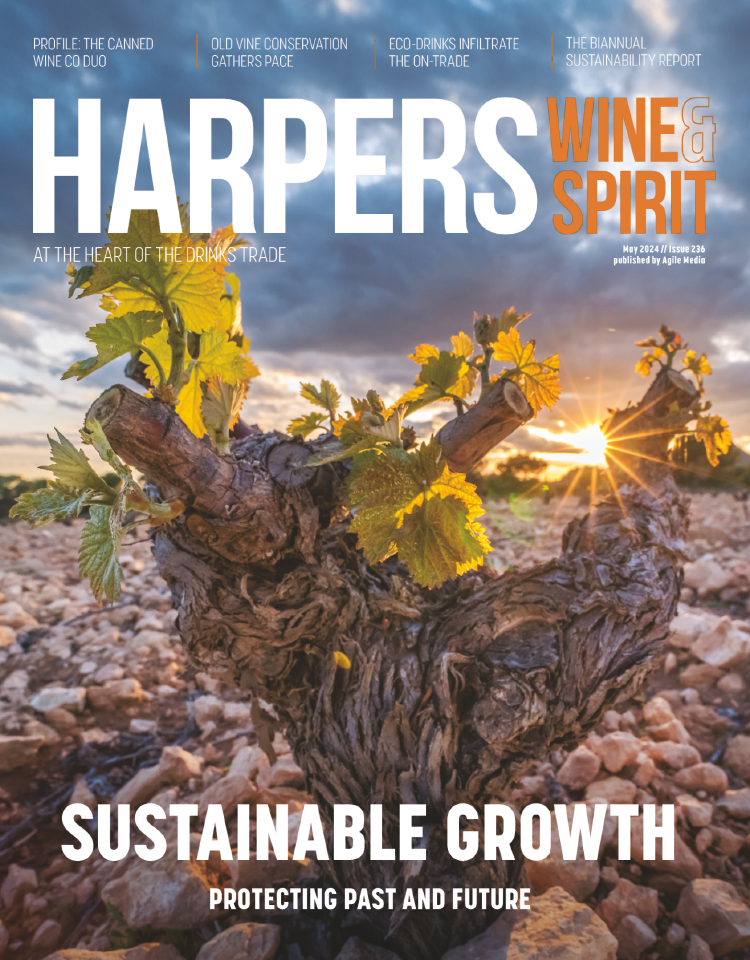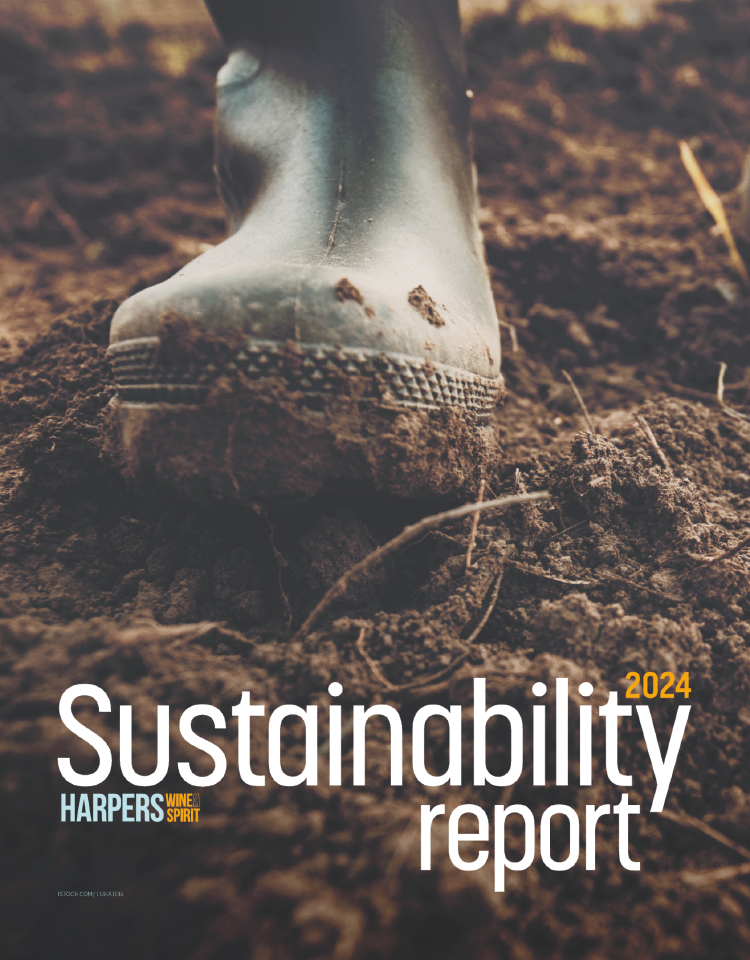
Culling carbon - how to face the challeneges of Net Zero
Harpers drew together a panel at LWF to discuss Meeting the Challenges of the Net Zero Journey, which delivered compelling insights into the demanding but critical journey ahead.
Panel:
↘ Andrew Bewes, MD, Hallgarten & Novum
↘ Muriel Chatel, MD, Sustainable Wine Solutions
↘ Oliver Lea, MD, WTAF (Wine Traders for Alternative Formats)
↘ Ben Marriott, implementation consultant, Bevica
↘ Mark Roberts, director of sales, Lanchester Group
↘ Andrew Wilson, MD, Winebox Company
↘ Andrew Catchpole, moderator and editor, Harpers Wine & Spirit
What are the considerations when first embarking on this journey?
Andrew Bewes: We are quite early on in our journey and the way we look to this is by asking what we can impact early on, the low-hanging fruit. Given that we work in an industry that involves shipping wines from around the world and then distributing that wine to customers around the whole of the UK, if you look at the longer-term challenges you need to target bit by bit. Whether that be finding the right supply partners, who are already going down that sustainability route, selecting greener ways of shipping, or increasing the use of electric cars for the sales team. One of the first things was our office environment… we use the structure of ISO 14001 to enable us to target the things we need to address.
Muriel Chatel: When we started Borough Wines, a retail environment, we just realised the benefit of replenishing wines in bottles – it was a very good way to offer better wines for the same price. We realised it was better to compromise on packaging than on the quality of the wine. But then, when we got interested in supplying the on-trade, we realised how wasteful the industry was. We thought ‘surely there must be a better way of doing this?’ and, as our expertise grew,
we realised this also impacted on
revenue. Fifteen years later we know what we are talking about and work
with over 100 mainly restaurant customers around London – basically everything we deliver in packaging we collect back. We deliver zero packaging waste, so we are very sustainable.
Andrew Wilson: What you need to do is to look at the more meaningful reductions first. Ideally, we’d all be in a race to absolute zero, right? That’s the best case. But obviously, it’s not possible. So then you start to fill in the gaps, find the quickest, biggest ways that we can reduce our carbon footprint, the ones that we should be pursuing first. But we mustn’t dilute the message for the consumer about the way forward with alternative formats and the savings that are available.
- READ MORE: Tech & Innovation: Going dark, building back
How do you best communicate progress?
Mark Roberts: We’re very lucky in that we got off the start very early with renewables and understanding [the benefits of] sustainability. So we have a wind turbine farm, we’ve got solar, which is fantastic, so lots of great innovation, and we produce considerably more energy than we use. But the one thing I’ve found a challenge to speak about is how you measure this sustainable progress, because everybody’s got different KPIs. There doesn’t seem to be a commonality of language, a common unit of currency that everybody can relate to and that resonates with consumers and buyers.
What we found at the start of our journey was we had all these great initiatives but it was difficult to quantify [so] difficult to talk about. What we now start to see is a lot more integrity when people talk about sustainability, which I think is needed.
MC: This common currency is so important. But how do you come up with it? We need a standard certification that people can easily understand, so that they can compare where people are on that [sustainability journey], because there are so many certifications and different routes and it’s confusing for consumers.
How important will alternative packaging and serves be in terms of cutting carbon and eventually achieving net zero?
Oliver Lea: What we can’t get away from is the dire need to reduce emissions in the near term. The IPCC said in its last working group that we need to make 43% reductions to greenhouse gases this decade in all sectors, so wine as a sector is duty bound to reduce it. Our message
from the WTAF is that’s not
possible without switching to alternative formats.
If you look at the supply chain, there aren’t the savings from lightweight and recycled glass – if you add them all up together, it doesn’t come to 43% [carbon savings]. Whereas, by moving to alternative formats across the board, one can pretty much get to 43%. So, as an industry, we have to look at ourselves and say ‘well, do we want to play our part?’ [Climate] is a crisis that we can’t ignore.
What are the biggest challenges in persuading all to play net zero ball?
AB: On the wholesale side, we react to the perceived needs of customers, which are retailers and restaurants, and there’s always this big debate about consumer acceptance of alternative packaging. I suppose the challenge for them is believing that their consumers will be happy to have an alternative package, sitting either behind the bar or on the table. We have to persuade the trade.
My buying team are very keen on looking at alternative packaging, which needs the support of the suppliers.
But there are also some issues,
especially in the Old World, in terms
of acceptance of new packaging within appellation rules and so on. But suppliers will come around to what the consumer wants, and younger consumers will
drive this.
OL: I think it’s a mixture of the two because it’s consumers ultimately who have to drink the wine from alternative formats. The trade may be resistant to change, or they may just be resistant to the communication that is required to inform the consumer. There was some research last year that showed most consumers don’t know that alternative packaging is more sustainable overall than glass bottles.
MR: I think it goes back to education, it’s our job as well to educate the consumer via insights and intelligence. But is it just about education, or also carrot and stick? How do we do it? Should it be a government thing, like the sugar tax? I think it’s a blend, it’s about alternative formats, certainly, then education and clear lines of communication.
OL: What we need to do is get a very simple message across [that] if you switch to alternative formats in the UK, you would save 750 million kilos of carbon footprint equivalent emissions every year. That’s the equivalent of taking 350,000 cars off the road, and it’s approximately 39% of emissions in the industry, so that’s where the biggest savings can come from.
What part can technology play?
Ben Marriott: It’s not the panacea that’s going solve it all. What it can do is help support your business decisions, either by allowing you to look at data in the right way or by capturing data in order to measure it. If you can have the data to support that it helps you to make practical decisions: ‘Actually, we’re selling this much of this wine and that much of that wine. If we reduce the packaging weight on this or look for an alternative format, what’s the potential impact of that?’ And it’s not just looking at it as a cash margin or sales revenue, but also the green impact, what the CO2 reduction would be if we use that alternative format.
Keywords:
- LWF
- Hallgarten & Novum
- Lanchester Group
- net zero
- WTAF
- Sustainable Wine Solutions
- Bevica
- Winebox Company








